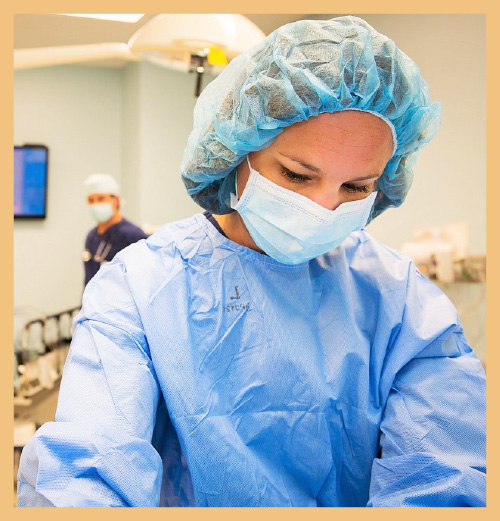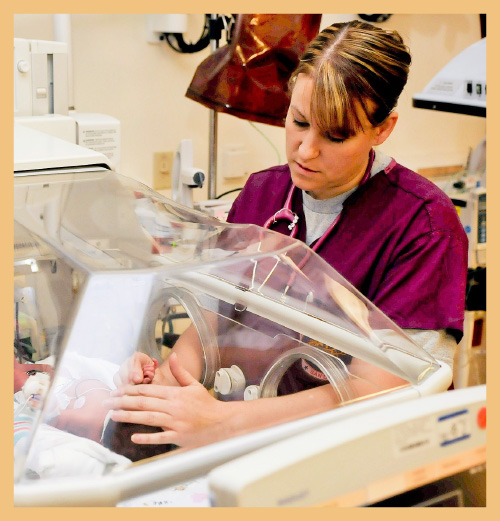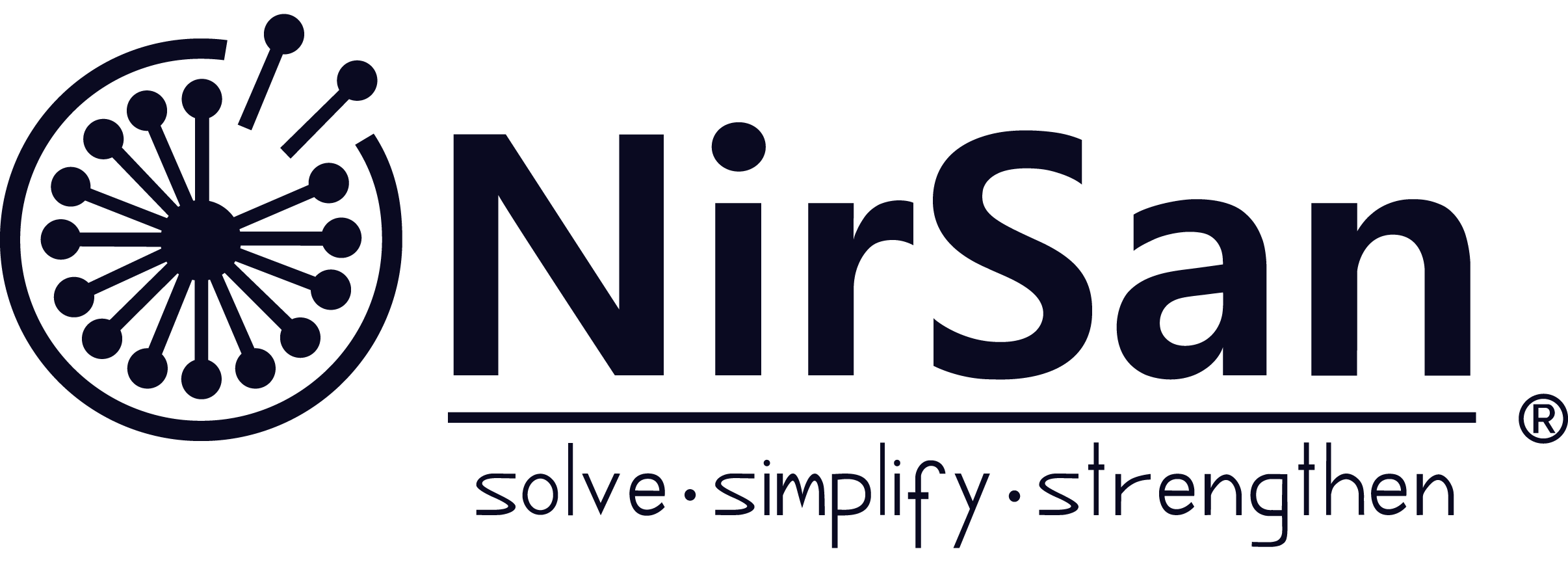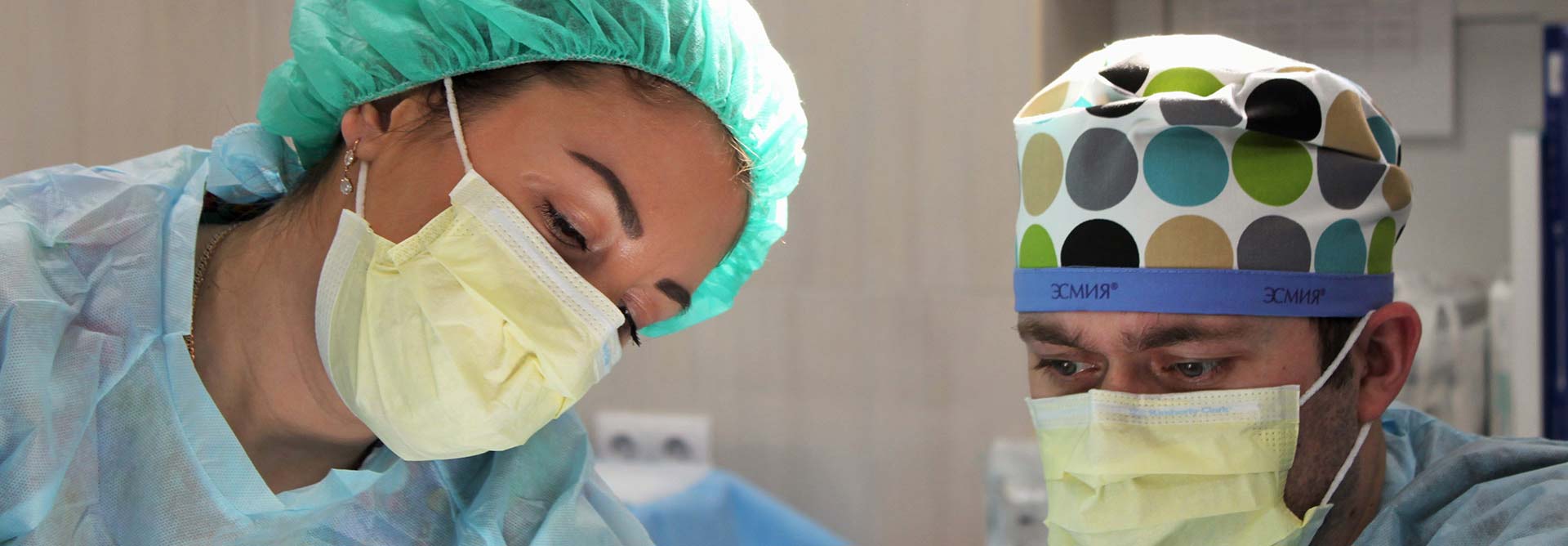
What is NURSPIRE®?

NURSPIRE® portrays the professional environment within the hospital’s nursing organisation, identifies the factors underpinning this environment, and describes the resultant impact on the motivational state of the nursing community. NURSPIRE® is designed based on our proprietary framework on ‘nursing climate’. It assesses the quality of work climate along seven dimensions of leadership, employee mission, structural governance, informal support, operating processes, people governance, and resourcing. NURSPIRE® describes the nurse’s motivational state along the hierarchical need states of physiology, safety, belongingness, esteem and self-actualisation. Finally, it surfaces the indicators of intent of the nursing organisation including job satisfaction, retention propensity and recommendatory propensity.
NURSPIRE® portrays the environment in the nursing organisation, identifies underlying factors, and describes its impact on the nurses’ motivational state. Based on our proprietary framework on ‘nursing climate’, NURSPIRE® makes an assessment along seven dimensions of leadership, employee mission, structure, informal support, operating processes, people governance, and resourcing. It profiles motivational state along the needs of physiology, safety, belongingness, esteem and self-actualisation; and indicates job satisfaction, retention propensity and recommendatory propensity.
NURSPIRE® portrays the environment in the nursing organisation, identifies underlying factors, and describes its impact on the nurses’ motivational state. Based on our proprietary framework on ‘nursing climate’, NURSPIRE® makes an assessment along seven dimensions of leadership, employee mission, structure, informal support, operating processes, people governance, and resourcing. It profiles motivational state along the needs of physiology, safety, belongingness, esteem and self-actualisation; and indicates job satisfaction, retention propensity and recommendatory propensity.
NURSPIRE® portrays the environment in the nursing organisation, identifies underlying factors, and describes its impact on the nurses’ motivational state. Based on our proprietary framework on ‘nursing climate’, NURSPIRE® makes an assessment along seven dimensions of leadership, employee mission, structure, informal support, operating processes, people governance, and resourcing. It profiles motivational state along the needs of physiology, safety, belongingness, esteem and self-actualisation; and indicates job satisfaction, retention propensity and recommendatory propensity.
Why worry about "nursing climate"? Why get NURSPIRE®?
The creation and design of NURSPIRE® is motivated by the truth that “it is not possible for a caregiver to care, unless she is adequately cared for”. Research over past decades have conclusively proved that a positive work climate and a high level of occupational health lie at the heart of successful nursing communities that consistently deliver holistic and patient-centric care. Of particular concern in nursing organisations with poor work climate are the high levels of depersonalisation and empathy degradation. Beyond the obvious concern of care degradation, poor nursing climate results in high turnover among nurses, and ultimately a poor reputation for the organisation within the nursing community. No wonder that NURSPIRE® is attractive in equal measure for nurses as well as for hospital leadership.
The design of NURSPIRE® is inspired by the truth that “it is not possible for a caregiver to care, unless she is adequately cared for”. Research over decades has established that positive work climates and high occupational health underpin nursing communities that deliver holistic and patient-centric care consistently. Of particular concern in poor nursing climates are depersonalisation and degradation of empathy, that, in turn, lead to care degradation, high turnover, and ultimately, poor organisation reputation. No wonder that NURSPIRE® is attractive for nurses as well as the hospital leadership.
The design of NURSPIRE® is inspired by the truth that “it is not possible for a caregiver to care, unless she is adequately cared for”. Research over decades has established that positive work climates and high occupational health underpin nursing communities that deliver holistic and patient-centric care consistently. Of particular concern in poor nursing climates are depersonalisation and degradation of empathy, that, in turn, lead to care degradation, high turnover, and ultimately, poor organisation reputation. No wonder that NURSPIRE® is attractive for nurses as well as the hospital leadership.
The design of NURSPIRE® is inspired by the truth that “it is not possible for a caregiver to care, unless she is adequately cared for”. Research over decades has established that positive work climates and high occupational health underpin nursing communities that deliver holistic and patient-centric care consistently. Of particular concern in poor nursing climates are depersonalisation and degradation of empathy, that, in turn, lead to care degradation, high turnover, and ultimately, poor organisation reputation. No wonder that NURSPIRE® is attractive for nurses as well as the hospital leadership.

Who will benefit from NURSPIRE®?

NURSPIRE® benefits the staff nurse and nursing supervisor, the leadership of the hospital’s nursing organisation, the institution overall, and quite importantly, the patient community. NURSPIRE® leads to personal and professional gratification of the nursing community. Personal gains stem from feeling aware, purposeful and accomplished. Professional gains stem from enhanced empathy, work satisfaction and judgment. Leaders of the nursing organisation gain from higher levels of job satisfaction, higher retention rates, and more recommendations. With motivated caregivers with the help of NURSPIRE®, patients now have a greater chance of holistic caring and healing. Finally, the institution itself stands to gain reputation within the nursing community and become a ‘magnet’ hospital.
NURSPIRE® benefits the staff nurse and nursing supervisor, the leadership of the nursing organisation, the healthcare institution overall, and quite importantly, the patient community. Personal gains of the caregivers stem from feeling aware, purposeful and accomplished. Professional gratification results from greater empathy, work satisfaction and judgment. Organisation leaders gain from higher job satisfaction, retention and recommendations. With motivated caregivers, patients now have a greater chance of holistic caring and healing. The institution becomes a ‘magnet’ hospital within the nursing community.
NURSPIRE® benefits the staff nurse and nursing supervisor, the leadership of the nursing organisation, the healthcare institution overall, and quite importantly, the patient community. Personal gains of the caregivers stem from feeling aware, purposeful and accomplished. Professional gratification results from greater empathy, work satisfaction and judgment. Organisation leaders gain from higher job satisfaction, retention and recommendations. With motivated caregivers, patients now have a greater chance of holistic caring and healing. The institution becomes a ‘magnet’ hospital within the nursing community.
NURSPIRE® benefits the staff nurse and nursing supervisor, the leadership of the nursing organisation, the healthcare institution overall, and quite importantly, the patient community. Personal gains of the caregivers stem from feeling aware, purposeful and accomplished. Professional gratification results from greater empathy, work satisfaction and judgment. Organisation leaders gain from higher job satisfaction, retention and recommendations. With motivated caregivers, patients now have a greater chance of holistic caring and healing. The institution becomes a ‘magnet’ hospital within the nursing community.
Where (in which settings) should you get NURSPIRE®?
Avail of NURSPIRE® under the following four realities, all of which point to a need to upgrade the nursing climate. The first reality is ‘high turnover’. While this is a common phenomenon in the nursing occupation, it can be brought under control through incisive diagnosis from NURSPIRE®. The second reality is ‘low propensity to recommend’. Research links low recommendation levels with high scores on the nurse’s ‘intent to leave within one year’. The third reality is ‘low patient satisfaction scores’. Poor patient experiences invariably point to an absence of patient centricity, and thereby to degraded standards of clinical and personalised care. The fourth reality is ‘an aspiration to be a magnet’. While not all hospitals hold this aspiration, ones that do will need NURSPIRE®, even if their nursing climate appears under control.
Avail of NURSPIRE® in any of four realities. First, ‘high turnover’. While this is a common phenomenon in nursing, NURSPIRE®’s incisive diagnosis can bring it under control. Second, ‘low propensity to recommend’, which research links to and correlates with high scores on the nurse’s ‘intent to leave within one year’. Third, ‘low patient satisfaction scores’, which invariably point to poor patient centricity, and thereby to degraded standards of clinical and personalised care. Fourth, ‘an aspiration to be a magnet’. While not all hospitals hold this aspiration, ones that do will need NURSPIRE®.
Avail of NURSPIRE® in any of four realities. First, ‘high turnover’. While this is a common phenomenon in nursing, NURSPIRE®’s incisive diagnosis can bring it under control. Second, ‘low propensity to recommend’, which research links to and correlates with high scores on the nurse’s ‘intent to leave within one year’. Third, ‘low patient satisfaction scores’, which invariably point to poor patient centricity, and thereby to degraded standards of clinical and personalised care. Fourth, ‘an aspiration to be a magnet’. While not all hospitals hold this aspiration, ones that do will need NURSPIRE®.
Avail of NURSPIRE® in any of four realities. First, ‘high turnover’. While this is a common phenomenon in nursing, NURSPIRE®’s incisive diagnosis can bring it under control. Second, ‘low propensity to recommend’, which research links to and correlates with high scores on the nurse’s ‘intent to leave within one year’. Third, ‘low patient satisfaction scores’, which invariably point to poor patient centricity, and thereby to degraded standards of clinical and personalised care. Fourth, ‘an aspiration to be a magnet’. While not all hospitals hold this aspiration, ones that do will need NURSPIRE®.

How does NURSPIRE® work?

NURSPIRE® is designed for biannual usage. For hospitals targeting ‘magnet’ status, NURSPIRE® can be used thrice a year during the initial years of the change journey. While using NURSPIRE®, you undergo the four stages of ‘installation’, ‘engagement’, ‘analysis’ and ‘dissemination’ over eight weeks. At installation, you identify respondents across the nursing organisation, as well as a smaller set of individuals from support and administrative departments. Patient inputs are optional in this product. NURSPIRE® interact with respondents through quantitative surveys and qualitative tools. Statistical analysis of data is based on the design of our framework. Final output for the hospital and nursing leadership includes the work climate dimensions, resultant motivational states, and intent indicators.
NURSPIRE® is designed for biannual usage. For hospitals aiming for ‘magnet’ status, NURSPIRE® can be used thrice a year. ‘Installation’, ‘engagement’, ‘analysis’ and ‘dissemination’ will take eight weeks. At installation, you will identify responders primarily from the nursing organisation, but also from support and administrative departments. Patient inputs are optional. NURSPIRE® will interact with these responders through quantitative surveys and qualitative tools. Final output for hospital and nursing leadership will include work climate dimensions, motivational states, and intent indicators.
NURSPIRE® is designed for biannual usage. For hospitals aiming for ‘magnet’ status, NURSPIRE® can be used thrice a year. ‘Installation’, ‘engagement’, ‘analysis’ and ‘dissemination’ will take eight weeks. At installation, you will identify responders primarily from the nursing organisation, but also from support and administrative departments. Patient inputs are optional. NURSPIRE® will interact with these responders through quantitative surveys and qualitative tools. Final output for hospital and nursing leadership will include work climate dimensions, motivational states, and intent indicators.
NURSPIRE® is designed for biannual usage. For hospitals aiming for ‘magnet’ status, NURSPIRE® can be used thrice a year. ‘Installation’, ‘engagement’, ‘analysis’ and ‘dissemination’ will take eight weeks. At installation, you will identify responders primarily from the nursing organisation, but also from support and administrative departments. Patient inputs are optional. NURSPIRE® will interact with these responders through quantitative surveys and qualitative tools. Final output for hospital and nursing leadership will include work climate dimensions, motivational states, and intent indicators.
When during the financial year should you get NURSPIRE®?
From start, NURSPIRE® requires eight weeks for the ‘installing’, ‘engaging’, ‘analysing’ and ‘disseminating’ phases. NURSPIRE® is designed to be in alignment with the human resource processes within the nursing organisation of the hospital. Processes that benefit from the output of NURSPIRE® include recruitment, training, performance management, and rewards and recognition. Hence, the usage of NURSPIRE® should align with the hospital’s people cycle for greatest benefits. If you have completed this year’s cycle, then give yourself eight weeks of NURSPIRE® before starting the next cycle. If you are in the middle of the cycle, adjust your people processes to create opportunities of incorporating NURSPIRE® output into decisions concerning matters such as recruitment and training.
NURSPIRE® is designed to be in alignment with the human resource processes within the nursing organisation. Processes that benefit from NURSPIRE® include recruitment, training, performance management, and rewards and recognition. Hence, the usage of NURSPIRE® should align with the people processes. If you have completed this year’s cycle, then give yourself eight weeks of NURSPIRE® before starting the next cycle. If you are in the middle of the cycle, adjust your processes such that you can incorporate NURSPIRE® output into decisions concerning recruitment and training.
NURSPIRE® is designed to be in alignment with the human resource processes within the nursing organisation. Processes that benefit from NURSPIRE® include recruitment, training, performance management, and rewards and recognition. Hence, the usage of NURSPIRE® should align with the people processes. If you have completed this year’s cycle, then give yourself eight weeks of NURSPIRE® before starting the next cycle. If you are in the middle of the cycle, adjust your processes such that you can incorporate NURSPIRE® output into decisions concerning recruitment and training.
NURSPIRE® is designed to be in alignment with the human resource processes within the nursing organisation. Processes that benefit from NURSPIRE® include recruitment, training, performance management, and rewards and recognition. Hence, the usage of NURSPIRE® should align with the people processes. If you have completed this year’s cycle, then give yourself eight weeks of NURSPIRE® before starting the next cycle. If you are in the middle of the cycle, adjust your processes such that you can incorporate NURSPIRE® output into decisions concerning recruitment and training.

© Copyright 2019  All rights reserved.
All rights reserved.
© Copyright 2019  All rights reserved.
All rights reserved.
© Copyright 2019  All rights reserved.
All rights reserved.
© Copyright 2019  All rights reserved.
All rights reserved.
